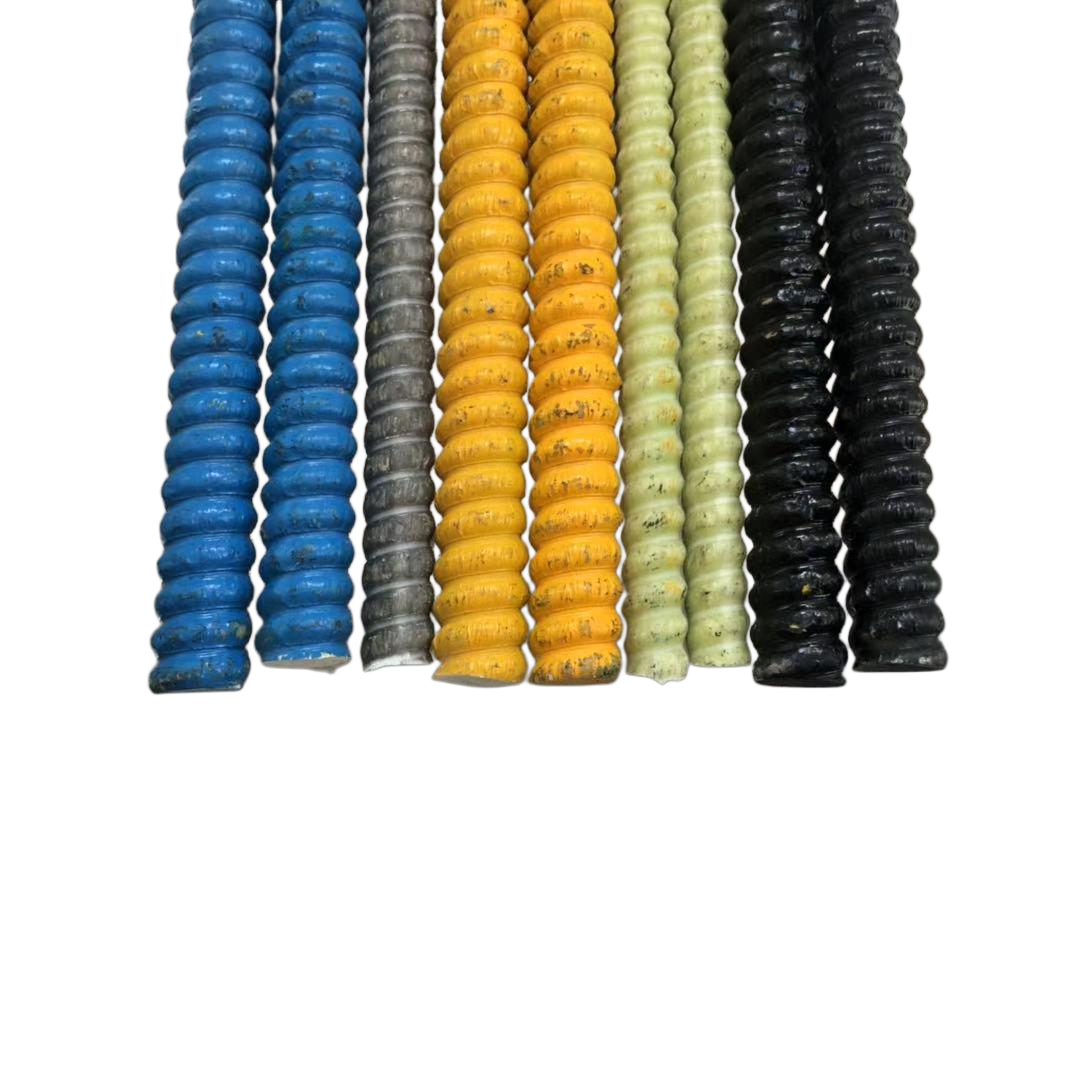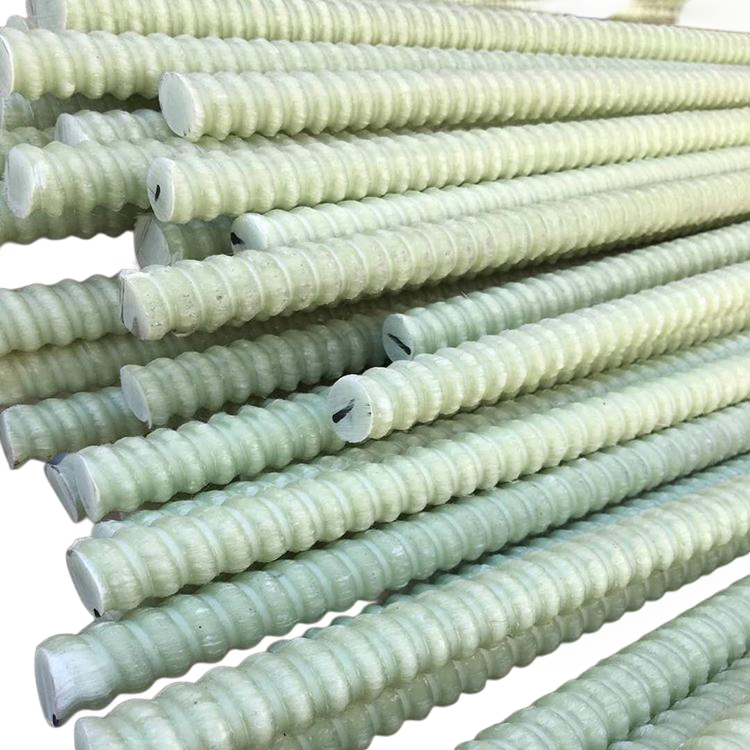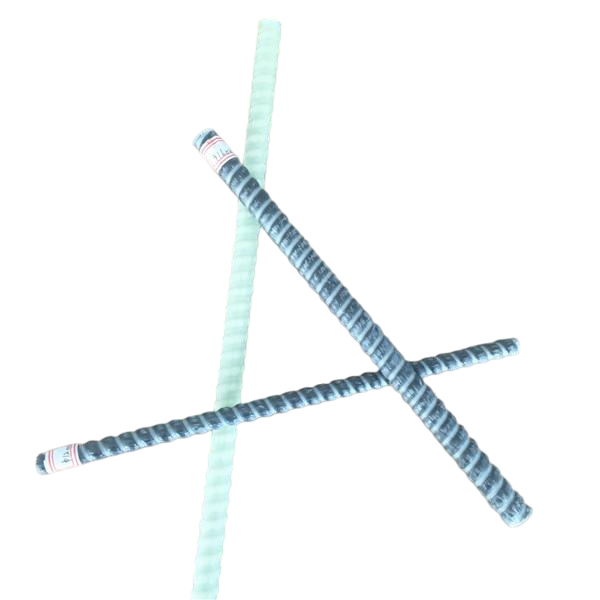Mechanical performance changes and fire protection design requirements of glass fiber reinforcement under high temperature environment
1、 Changes in mechanical properties of glass fiber reinforcement under high temperature environment
The mechanical performance changes of glass fiber reinforcement under high temperature environment show obvious stage characteristics, specifically manifested as:
Low temperature range (100-200 ℃)
Performance changes: The strength and elastic modulus slowly decrease by about 10% -15%.
Mechanism: High temperature intensifies the thermal motion of glass fiber molecules, leading to a weakening of the intermolecular forces between fibers, but the chemical bonds have not yet been destroyed.
Data support: Experiments have shown that the retention rate of tensile strength of glass fiber reinforcement is about 85% -90% at 200 ℃.
Medium temperature range (200-300 ℃)
Performance changes: The performance significantly decreases, with a reduction of 30% -50% in tensile strength and a more significant decrease in elastic modulus.
Mechanism: Chemical bonds (such as Si-O bonds) begin to break, the fiber molecular structure depolymerizes, and the interfacial bonding strength weakens.
Data support: At 300 ℃, the tensile strength may decrease to below 50% of the normal temperature value, while the elongation increases but the bearing capacity decreases.
High temperature range (>300 ℃)
Performance changes: softening, melting, and even combustion, completely losing mechanical properties.
Mechanism: The resin matrix undergoes thermal decomposition, the fiber structure disintegrates, and the material undergoes carbonization or combustion reactions.
Data support: When the temperature exceeds 400 ℃, the glass fiber reinforcement may lose its integrity due to resin decomposition.
Comparative advantages with steel bars
High temperature resistance: Glass fiber reinforcement does not burn with an open flame below 300 ℃, while steel reinforcement may experience a sudden drop in strength above 600 ℃ due to the peeling of the oxide layer.
Flame retardancy: The ultimate oxygen index (LOI) of glass fiber reinforcement is about 26% -35%, which is better than ordinary polymer materials.
2、 Fire Protection Design Requirements for Fiberglass Reinforcement in High Temperature Environments
To ensure the safety of fiberglass reinforcement in high temperature environments, fire protection design should follow the following core principles:
Compliance with building fire prevention regulations
Fire compartment: According to the "Code for Fire Protection Design of Buildings" (GB 50016), fire compartments are divided into single story factory buildings with an area of ≤ 3000 square meters and multi story buildings with an area of ≤ 2000 square meters.
Fire resistance rating: The fire resistance rating of the joint factory building shall not be lower than level two, and fire-resistant partitions with a fire resistance limit of ≥ 2.0 hours shall be used in key areas (such as the melting section).
Material and Construction Requirements
Fire isolation: High temperature areas (such as kiln workshops) and other areas should use fire-resistant partitions with a fire resistance limit of ≥ 2.0 hours, and doors and windows should use Class B fire-resistant doors and windows.
Structural protection: For glass fiber reinforcement exposed to high temperatures, calcium silicate board (fire-resistant for 4 hours) or ceramic fiber blanket can be used for wrapping and protection.
safe evacuating design
Exit setting: Each floor should have at least 2 safety exits, and the evacuation distance should be ≤ 60m (for single floors) or ≤ 40m (for multiple floors).
Evacuation signs: Install fluorescent evacuation indicators to ensure visibility of ≥ 10m after power outage.
Fire protection facility configuration
Fire extinguishing system: The high-temperature workshop is equipped with an automatic sprinkler fire extinguishing system or gas fire extinguishing system, with a designed water consumption of ≥ 10L/s · ㎡.
Alarm device: Install a linear temperature detector with an alarm temperature set at 58 ℃ (operating temperature of 72 ℃).
3、 Case Study on High Temperature Performance Optimization and Fire Protection Design
Performance optimization techniques
Surface treatment: Spraying high-temperature resistant coatings (such as silicone resin) can increase the strength retention rate to over 60% at 300 ℃.
Composite modification: Adding alumina or silicon carbide particles to increase the softening temperature to above 500 ℃.
Engineering application examples
Ocean platform: Adopting a combination structure of wrapped GFRP reinforcement and UHPC, the bonding strength is improved through sandblasting treatment, and the residual strength is ≥ 40% after 1200 ℃ fire baking test.
Tunnel support: Embedding phase change materials (PCM) in the fire protection layer to absorb heat and delay temperature conduction, reducing the surface temperature of the reinforcement by 50% -70%.
4、 Research Frontiers and Standard Suggestions
Performance evaluation method
Thermal mechanical coupling model: Combining the heat conduction equation and constitutive relationship, predict the stress-strain behavior of reinforcement materials at high temperatures.
Residual strength test: After heating the fire curve according to ISO 834 standard, test the residual tensile strength of the reinforcement material.
Standard improvement direction
Additional high-temperature performance indicators: Add residual strength requirements of 300 ℃ and 60 minutes to the "Glass Fiber Reinforced Bars for Civil Engineering" (JG/T 406).
Special section on fire protection design: Develop specialized fire protection design guidelines for glass fiber reinforced structures, clarifying the correspondence between the thickness of the protective layer and the fire resistance limit.
Through material modification, structural optimization, and standard improvement, the applicability of glass fiber reinforcement in high-temperature environments can be significantly improved, providing safer solutions for fields such as chemical engineering, transportation, and marine engineering.




























